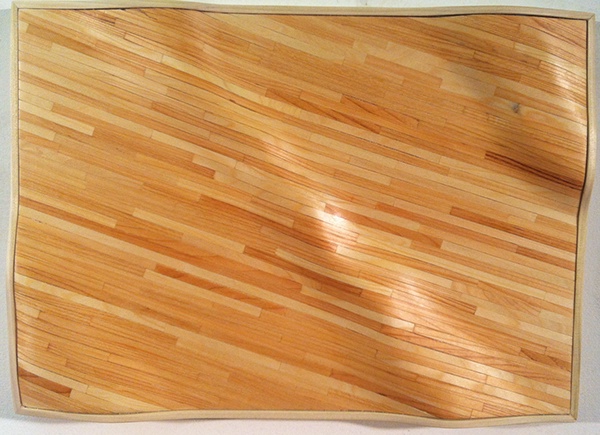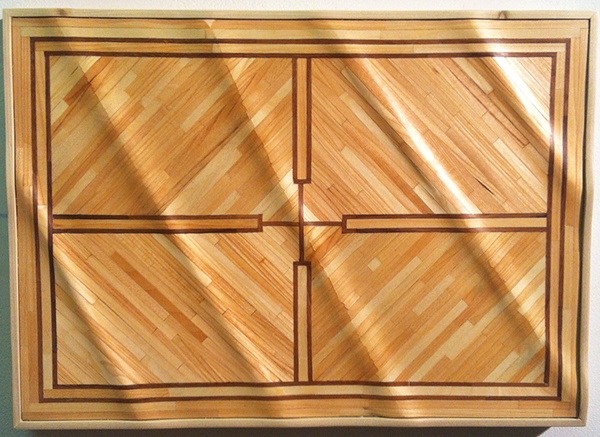






UN-settlings
The “settling” of a house refers to that period of time in which structures relax into themselves and as such become more solid, more dependable. These pieces imagine an "un-settling," a questioning of that process and the possibility of that “settling” being confronted with resistance, doubt, and ultimately rejection and even hope. These wal pieces are snapshots of wood floors. But they are dissatisfied. The floor, it seems, is reshaping itself into something else. It is not an aggressive rise, there is no violence; it is a graceful rejection of its flatness. This wood, clearly, was never meant to be a floor. Some mistake has occurred, in the forest, in the mill, in the mind of a lumberjack or in that of a carpenter. Somewhere along that long production line, we missed it. This wood, was supposed to be a boat. We missed it. But the wood knew, and that determination is stronger than the nails and glue, even the constant weight of our own bodies and desires. The force of this wood’s sense of purpose is evidenced in the rise of the floor itself. Floors are supposed to be floors, the walls are the walls and the roofs are simply roofs. But as we stand here, witnessing a floor reject our will, and become what it feels it was meant to become, all of the inanimate things that surround us soften. Our steps become lighter-our voices quieter-as we move through the space. All of a sudden, we are listening.